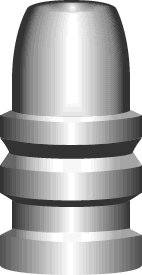Home | Glossary | Resources | Help | Contact Us | Course Map
Archival Notice
This is an archive page that is no longer being updated. It may contain outdated information and links may no longer function as originally intended.
Finishing
At this stage, bullets are usable but some may require processing to add other features. The most common is the crimping groove or cannelure, which may be functional or cosmetic in nature. This can be accomplished on the bullet assembly press or at a separate work station.
At this point, the bullets are covered in processing oils and need to be cleaned. These oils are removed by washing or dry tumbling in clean, ground corn cob. Cob is absorbent and provides the additional benefit of giving the bullets an attractive polishing.
Bullets need to be tested prior to distribution and sale. Sample bullets for each lot are inspected for dimensional compliance and accuracy.
Cartridge Case Manufacture
Cartridge cases fall into two broad categories -- metallic and shotshell. Metallic cartridges are used in rifles and handguns and are comprised completely of metal. Shotshell cases are most often hybrids, combining a small amount of metal with paper or plastic.
Metallic Cases
Metallic case production is similar to bullet jacket production, except that the raw material is brass (copper: zinc ratio of 70:30). In brass mills, the standard name for this alloy is cartridge brass. Rimfire and centerfire cases require different processing.
Additional Online Courses
- What Every First Responding Officer Should Know About DNA Evidence
- Collecting DNA Evidence at Property Crime Scenes
- DNA – A Prosecutor’s Practice Notebook
- Crime Scene and DNA Basics
- Laboratory Safety Programs
- DNA Amplification
- Population Genetics and Statistics
- Non-STR DNA Markers: SNPs, Y-STRs, LCN and mtDNA
- Firearms Examiner Training
- Forensic DNA Education for Law Enforcement Decisionmakers
- What Every Investigator and Evidence Technician Should Know About DNA Evidence
- Principles of Forensic DNA for Officers of the Court
- Law 101: Legal Guide for the Forensic Expert
- Laboratory Orientation and Testing of Body Fluids and Tissues
- DNA Extraction and Quantitation
- STR Data Analysis and Interpretation
- Communication Skills, Report Writing, and Courtroom Testimony
- Español for Law Enforcement
- Amplified DNA Product Separation for Forensic Analysts


